Hong Kong (China)
Cruise Port schedule, live map, terminals, news
Port Hong Kong cruise ship schedule shows timetable calendars of all arrival and departure dates by month. The port's schedule lists all ships (in links) with cruises going to or leaving from Hong Kong, China. To see the full itineraries (ports of call dates and arrival / departure times) and their lowest rates – just follow the corresponding ship-link.
| Day | Ship | Arrival | Departure |
|---|---|---|---|
| 15 October, 2025 Wednesday | 07:00 | 23:00 | |
| 18 October, 2025 Saturday | |||
| 19 October, 2025 Sunday | |||
| 20 October, 2025 Monday | |||
| 21 October, 2025 Tuesday | |||
| 21 October, 2025 Tuesday | 14:00 | 23 Oct, 13:00 | |
| 21 October, 2025 Tuesday | 08:00 | 22 Oct, 16:00 | |
| 22 October, 2025 Wednesday | |||
| 22 October, 2025 Wednesday | 07:00 | 23 Oct, 16:00 | |
| 23 October, 2025 Thursday | 13:00 |
Hong Kong is a deepwater port city and one of China's two Special Administrative Regions/SARs (together with Macau) with total area approx 2755 km2 / 1064 mi2, of which ~60% is water. The city has population around 7,3 million, ranking it the world's 4th most densely populated (6800 people per km2 / 17600 per mi2).
British Hong Kong was established as a colony in the mid-19th-century (1841) when Great Britain ceded Hong Kong Island. The colony was expanded in 1860 (when was ceded also the Kowloon Peninsula) and in 1898 Great Britain leased the territory from China for 99 years, paying annual rent. Hong Kong was transferred to China in 1997, while Portuguese Macau (the whole territory) was transferred to China in 1999. China's special administrative regions/autonomous territories HKSAR (Hong Kong) and MSAR (Macao) maintain their own governments and economies (separate from those in mainland China) and even have their own flags and currencies (HKD/Hong Kong dollar, and MOP/Macanese Pataca).
Port Hong Kong
Hong Kong Port (locode HKHKG) is on South China Sea and is one of several Chinese hub seaports that serve East and Southeast Asia. In 2007, the port set a record in container cargo handling - 23,9 million TEU containers, including around 456,000 vessels carrying around 243 million tons of cargo and over 25 million passengers.
The Port serves predominantly container shipping traffic (mainly manufactured products), raw materials shipping and passenger shipping (ferry and cruise). The port features a natural deep-water harbor waterway (Victoria Harbour) providing safe docking / berthing and the ability to handle all types of ships. The port is among the world's largest and busiest in terms of shipping movements, handled cargo volumes and passenger shipping traffic.
The Port's average turnaround time for container ships is about 10 hours. The seaport has 9 container terminals - at Kwai Tsing, Stonecutters Island, and Tsing Yi. A large number of containers are also handled at Tuen Mun's River Trade Terminal.
Kwai Tsing Container Terminals are in the harbor's northwestern part. there are 9 terminals with a total of 24 berths (frontage length approx 8,5 km / 5,3 mi). The total area covered by these terminals is approx 2,7 km2 (1 mi2). These terminals' total capacity is over 18 million TEUs (containers). These 9 container ship terminals handle around 60% of the port's total traffic.
At Tuen Mun (near Pillar Point) is located the River Trade Terminal. Its main services include container consolidation, and bulk cargo shipping between Hong Kong and the Pearl River Delta ports (Guangzhou-Nansha, Macau, Shenzhen, Jiangmen, Huizhou, Zhaoqing). The River Trade Terminal was opened in 1999. It covers a total area of 0,65 km2 (0,25 mi2) and has quay length of approx 3 lm (2 mi).
Seaport's mid-stream operations involve the handling of container ships at anchorage/at sea. These operations are performed mainly by barges, which load/offload the containers from/to docking piers located nearby. This port service (at sea container handling) is unique for Hong Kong and ogten preffered by smaller cargo shipping companies du to the service's significantly lower handling fees in comparison to those at the dedicated container terminals. The port's mid-stream operations include 11 container yards covering a total area of approx 0,28 km2 (0,1 mi2) with frontage length approx 3,2 km (2 mi).
Port Hong Kong also has facilities for ship repairs and drydocs that can serve all types of ships. The port's 2 floating dry-docks are off Tsing Yi Island's west coast, while the other 2 are northeast of Lantau Island. The largest drydock can accommodate the world's largest vessels with DWT up to 150,000 tons. The port also has numerous smaller shipyards offering repairs and building of smaller vessels.
The port has 58 mooring buoys, of which 31 can serve vessels with LOA length up to 183 m (600 ft) and 27 - with LOA length 137 m (450 ft). There are 44 "typhoon buoys" used for ship mooring during typhoons. The port also has 3 anchorages (for international vessels) and another 16 anchorages used for dangerous goods (8) and general purposes (8) including temporary berthing.
The seaport provides over 460 marine support vessels for navigation assistance throughout its waterways.
Port Hong Kong is the world's 4th biggest and most efficient containership cargo port (following Shanghai, Singapore and Shenzhen). In 2013, the port handled 22,35 million TEU containers (compared to Shanghai's 33,62 million).
- UN-LOCODE (United Nations location code) - HKHKG
- supported by excellent road, rail and air infrastructure
- deep water harbor and berths
- sheltered harbor area
- access unrestricted by tides
- capability to accommodate more than 4 cruise vessels at a time
- Both Hong Kong cruise ship terminals provide shore-to-ship power (shore-side electricity supply) which reduces significantly the levels of emissions, noise and vibration in port.
- The cruise port is accessible the whole year round - 24/7, 365 days a tear.
- Cruise ships usually arrive in Hong Kong in the early morning (7 or 8 am) or early afternoon (1 pm), and depart from Hong Kong in the late afternoon (at 5 or 6 pm).
Hong Kong cruise port
Royal Caribbean started cruise operations in Asia in 2007, with roundtrips from (homeporting ships in) Hong Kong and Shanghai. In 2007, Hong Kong had around 133,000 homeport passengers (booked roundtrips).
(statistics) in the period April 2013 - March 2014, the number of people that visited Kai Tak Terminal was 319516, plus 185128 HK residents. Between April 2014 - February 2015, the number of HK visitors grew to 692804 plus 702319 HK residents.
(statistics) the HK's Kai Tak terminal handled ~220,000 cruise passengers in 2015. The expected number for 2016 is 350,000 passengers.
(statistics) of all Kai Tak cruise ship calls in Hong Kong, ~80% of the passengers are on round-trip itineraries from here. Many passengers/crew fly in and out of HK, stay in local hotels, and many of them stay additional days. Located near the terminal shopping malls report increased spending by cruise ship passengers. Cruise lines spend on local advertising, provisioning, port pilots and tug boat assistance, dockworkers and ground handlers, buses, tour operators, commissions.
In March 2015, a "Cruise Port Development" study on ports in Asia positioned Hong Kong among 21 ports (for round-trip 6-7-days Asian cruise itineraries) which already have plans to upgrade their existing facilities (berths for up to 100,000 GRT, infrastructure). Among those ports were also - China (Sanya, Xiamen, Qingdao), Taiwan (Keelung, Hualien), Japan (Miyakojima, Takamatsu), South Korea (Mokpo, Yeosu), Vietnam (Hon La), Philippines (Manila, Boracay, Puerto Princesa).
June 21, 2015, one of the world's biggest cruise vessels - Quantum of the Seas - entered Hong Kong's Victoria Harbour. The RCI ship (168,666 tons, length 1142 ft / 348 m, capacity 5000 passengers) berthed at Kai Tak Terminal. The ship looked like a floating skyscraper with its 16 decks above water. Its call here was part of a 54-day repositioning itinerary from New York to Shanghai.
(statistics 2016-2017) Kai Tak Terminal's shipping traffic expectations for 2016 were 330000 passengers, doubling in 2017 to 660000 pax. According to statistics, 25-30% of all embarking passengers are from mainland China, 30-40% from Hong Kong, and the balance - from international destinations and near China Asian countries. Ocean and Kai Tak terminals (combined) handled ~1,7 million passengers in 2017, which was 4,4% increase over 2016. Of those 1,7 million, 708,000 were homeported (booked on roundtrips), 80% were Chinese (including Taiwanese) and over 50% were HK residents.
An official HKTB (Hong Kong Tourism Board) study revealed that China has a huge potential of minimum 83 million cruise ship tourists. This is 4 times the current number of all cruise passengers worldwide. The island's close location to Central China and Taiwan and its connectivity by air, high-speed trains and land transportation (via Zhuhai-Macao Bridge) provide the Hong Kong port potential 50+ million cruise tourists. According to the study, most of these passengers are younger and family-oriented. About 70% have families with children under 16 and intended to book a cruise vacation. Over 51% of all respondents were between 20 and 29 years old and seriously considering taking a cruise break in near future.
In 2016 was inaugurated a ferry service to Kai Tak Terminal. The new ferry pier was opened on March 29, 2016. The renovated Kai Tak Ferry Pier is located at the former Kai Tak Airport fire station and near the new cruise port. Special ceremonies (including party events) were held on the Cunard ship RMS Queen Mary 2. Kai Tak Ferry Pier allows cruise ship passengers disembarking in Hong Kong (as well as local visitors) the convenience to travel on shore excursions via ferries and also to use the regular, daily scheduled ferry services from North Point and Kwun Tong to Kai Tak.
On March 29, 2016,Cunard liners Queen Mary 2, Queen Elizabeth and Queen Victoria visited the port arriving within a 24-hour period. Docking at Kai Tak and Ocean Terminal, Cunard ships disembarked a total of 17000 passengers and crew. Berth reservations were made 2 years in advance by Carnival UK. The visits were part of their scheduled 2016 World Cruise itineraries. In the evening, Victoria continued to Singapore, while Elizabeth and QM2 left for Nha Trang (Vietnam).
(November 2016) RCI's decision for Ovation of the Seas to be homeported in Hong Kong (Nov 2016) made Ovation the largest ever cruise ship based in HK. It joined here Voyager of the Seas, which homeport season was extended from 3 to 4 months. The move increased Royal Caribbean's Hong Kong cruise program from 20 to 30 itineraries. The result was over 100,000 passengers - an increase of 65% over 2015.
In 2016, the number of cruise lines using Kai Tak Terminal was 18 - double in comparison to 2015 (9 different companies). Over 70% of the ship calls (95 in total) were on roundtrips/turnarounds. The number of handled cruise passengers was over 370,000.
The 2017 scheduled ship calls were over 50% more compared to 2016. Of all calls, around 70% are full homeport and partial turnaround visits. Scheduled for completion in 2017 were also the infrastructure projects "Hong Kong Island - Zhuhai City - Macao Bridge" (land connection Hong Kong-Zhuhai-Macao) and a new high-speed train link connecting Hong Kong with 16 major mainland China cities. The train's daily service starts in 2018.
October 29, 2017, was a record day for the Kai Tak Terminal when the facility handled a total of 13,327 passengers from two visiting liners - Ovation of the Seas (RCI) and Celebrity Millennium. In 2017, the port handled over 700,000 passengers.
In March 2018, Kai Tak Terminal handled 6 maiden ship calls (from total 22 booked berthings) - Viking Sun, Silver Discoverer, Star Legend, Columbus, Norwegian Jewel, Queen Elizabeth.
After a 3-year hiatus, in 2023, the cruise port/Kai Tak Terminal handled a total of 138 ship calls. Also in 2023, the China-based company and travel brand Resorts World Cruises started homeporting/turnaround operations from Hong Kong.
In 2024, the cruise port (Kai Tak Terminal) received 98 ship calls, including 7 first-time visits.
Genting Hong Kong rail-cruise deals
In 2018, Hong Kong City introduced a high-speed train service (4-hour ride) that allows faster travel for around 300 million people from mainland China annually. With the opening of Hong Kong's MTR (High-Speed Rail / HSR) section in August 2018, the city became connected to the world's largest-ever high-speed train network. In November 2018, Genting Cruise Lines - the only company with year-round Hong Kong homeporting - launched a "rail cruise" campaign. The 2-week campaign was based on World Dream ship (2-day weekend mini-cruise specials) and included numerous road shows held in key MTR locations.
GHK's rail-cruise promo was a partnership with Hong Kong Tourism Commission. MS World Dream's first 1000 train-and-cruise bookings received an instant MTR train fare rebate (up to RMB 400 / USD 58 per cabin).
Guangshengang XRL (Guangzhou-Shenzhen-Hong Kong Express Rail Link) is a high-speed railway connecting Beijing with Hong Kong (Kowloon Station) via Guangzhou and Shenzhen. The largest cities connected to Hong Kong via HSR (without interchange) also include Changsha, Guiyang, Wuhan and Nanning.
Hong Kong ferry port
Part of the port's ferry services are provided via the Macau Ferry Terminal and the Shun Tak Heliport located in Sheung Wan (Hong Kong Island's northern coast). It serves the passenger traffic to Macau and southern China cities. The regularly scheduled helicopter service is to Macau. Charter flights are offered to other destinations.
The rest of the port's ferry services are via China Ferry Terminal located in the Tsim Sha Tsui urban area (southern Hong Kong Island, on Kowloon Peninsula, and facing towards Victoria Harbour). This terminal serves ferries to Macau and a total of 24 mainland China ports.
The above 2 ferry terminals serve around 100 passenger ferry ships, most of which are high-speed crafts (including catamarans and hoverferries). In 2001, both terminals handled around 17 million passengers.
Cruise itineraries to and from Hong Kong China
Follows a list of destinations visited by cruise ships leaving out of Hong Kong:
- World Cruises - from Hong Kong are offered short segments on around the world voyages by luxury lines (like Crystal, Cunard, P&O, Princess) and also by small lines (like Cruise And Maritime, Phoenix Reisen). The full-length itineraries can be up to 110+ days. They usually start from the UK (out of Southampton) and Australia (Sydney). The most common segments offered for booking are between Hong Kong and Dubai, Australia (Sydney), Europe (Southampton or Mediterranean ports). Eastbound itinerary segments offer departures from Hong Kong to USA - California (San Francisco, Los Angeles), Florida (Miami, Fort Lauderdale), and even NYC New York. Eastbound cruise itineraries from Hong Kong to Europe are the longest. They include Panama Canal transition and Transatlantic crossing to UK (Southampton).
- Short-break (4-5 days) round-trip itineraries out of Hong Kong visit ports in China and Vietnam.
- Short-break (4-5 days) round-trip itineraries out of Hong Kong visit ports in China combined with Vietnam, Japan, Taiwan. The are also round-trip itineraries visiting exclusively Vietnam or Japan.
- Longer (up to 2 weeks) itineraries are between Hong Kong and Singapore and often visit ports in Thailand and Vietnam.
- The list of visited Southeast Asia countries includes Taiwan, Vietnam, Thailand, Cambodia, Malaysia, Indonesia. Luxury ships may also visit the Philippines.
- On westbound world cruise segments from Hong Kong, the itineraries visit ports in India, Sri Lanka, UAE, Oman, Jordan, Egypt (incl Suez Canal transition), Mediterranean ports (in Greece, Italy, Spain, France, etc).
Relocation itineraries to Australia from Hong Kong (RepositionCruises.com) usually include stops in Singapore and Indonesia and end in Fremantle-Perth, Brisbane or Sydney. These deals are offered seasonaly and mainly by P&O Australia.
Dream Cruises (Genting Hong Kong's new luxury brand) started operations in November 2016 with the newbuild ship Genting Dream (150,000 tons, 3400 passengers, 2000 crew). The liner was homeported in 3 Chinese ports - Sanya, Nansha-Guangzhou and Hong Kong. Scheduled itineraries (roundtrip departures) were 7-night, stopping at Guangzhou, Vietnam (Halong Bay, Danang), Sanya and Guangzhou (Nansha Port).
The other Genting subsidiary (Star Cruises) homeported here 2 ships (Star Pisces and Superstar Virgo) both docking at Ocean Terminal.
Hong Kong-Macau Bridge
The 2018-opened Hong Kong-Zhuhai-Macau Bridge (HZMB) cost CNY 127 billion (~USD 19B) and is a bridge-tunel system with total length 55 km / 34 mi. HZMB carries 6 lanes and consists of 3x cable-stayed bridges, 1x undersea tunnel/tube (length 6,7 km / 4,2 mi) and 4x artificial islands. The Main Bridge's viaduct (length 23 km / 14,2 mi) crosses the Pearl River Estuary and the three bridges allow ships to pass underneath.
As part of the HZMB project were constructed the Hong Kong Link Road (connecting the bridge-tunnel section to an artificial island) and the Zhuhai Link Road (connecting an artificial island with Gongbei and Zhuhai). The latter road also connects to three major highways - Jing-Zhu, Guang-Zhu, and Jiang-Zhu. Shuttle buses run 24 hours a day leaving every five minutes (HZMB bus travel time is ~40 min). The buses link HZMB directly to Hong Kong Port, Zhuhai Port and Macau Port.
Hong Kong cruise terminal
Hong Kong cruise port is in Victoria Harbour and has 2 passenger terminals. Kai Tak Cruise Terminal was inaugurated in June 2013. Its opening put Hong Kong among the leading Asian cruise ship tourist hubs. The city's popularity and numerous (including architectural) attractions also make it a world-class vacation travel destination for domestic and international travelers of all ages.
The new Kai Tak terminal boasts amazing views of the city's skyline of futuristic-designed skyscrapers. The terminal's building cost to build was HKD 8,2 billion (USD 1 billion). The construction project was part of Hong Kong port's USD 16,76 billion harbor development project.
The Kai Tak Cruise Terminal can accommodate 2 large vessels simultaneously. Its passenger capacity is 8400 plus 1200 crew.
The facility is managed/operated by the WCT company (Worldwide Cruise Terminals Ltd).
The terminal building's design is based on the smaller PTA (Passenger Terminal Amsterdam). PTA was picked as a model for Kai Tak based on the fact that the Dutch port is multifunctional.
There are future plans for Kai Tak's development/expansion.
Kai Tak Cruise Terminal
- address - "33 Shing Fung Road, Kowloon"
- location - on the old Kai Tak Airport runway, approx 25 mi / 40 km from Hong Kong International Airport (~ 50 min drive distance) and 3 mi / 5 km from Hung Hom train station. The old airport was relocated to Chek Lap Kok Island.
- 2 berths (width 115 ft / 35 m) - one (length 1490 ft / 455 m) and two (length 1295 ft / 395 m)
- draft restriction - 39,4 ft / 12 m (max 42,6 ft / 13 m )
- Max Gross Tonnage restriction - 110,000 tons
- Construction period - 2010-2013
- Architects - Forster + Partners (UK), Wong Tung & Partners (Hong Kong)
The floor area is sized 776,450 ft2 / 72,135 m2.
The facility's max capacity is 9600 (8400 passengers plus 1200 crew).
Kai Tak Terminal (opened on June 13, 2013) has a 3-story, natural light-filled building with several huge halls for baggage handling, customs and immigration, a waiting area, a large roof garden (public, with sheltered outdoor spaces), a commercial area, retail shops, one restaurant, a car park. The terminal's processing capacity is 3000 passengers per hour.
Among the design's features are the column-free layout (width 230 ft / 70 m) and low energy consumption. Huge areas can be converted into event halls that can be privately rented and used for other purposes during off-peak periods - live performances, celebrity appearances, themed events, product launches, exhibitions, car shows, weddings, corporate meetings.
Being open the whole year round, 4000+ local residents visit daily the terminal building and the park.
The multifaceted harbor development project transformed an abandoned area into a top-quality residential/business district with large-sized parks and a multipurpose sports stadium (capacity 50,000 guests, with a retractable roof).
Transport links between the city and the cruise terminal include free-of-charge shuttle buses (transporting passengers to nearby shopping malls and metro stations). Another option are the paid shuttle buses to the Airport Express Station and the Railway Station (frequently scheduled trains to other north China ports, such as Dongguan, Guangzhou (Nansha Port), Shenzhen.
The terminal's newly renovated Runway Park Ferry Pier started service in March 2016. It provides both cruise passengers and local visitors with additional shore excursions choices via ferry travel (including scheduled and privately chartered services) to the cruise terminal from Kwun Tong and North Point.
In the following infographic you can see the terminal building's levels and their main functions.
Kai Tak Cruise Terminal's 2017 audit showed that only few ships use the billion-dollar facility. Also, cruise tourists were hardly spending money here.
The terminal requires easier transportation links and better facility maintenance.
Kai Tak's two berths were both occupied for only 5 days (during the 6 months peak season 2015) and for only 2 weeks in 2016. The increase in shipping traffic for 2016 was just 5% and still 31,5% lower than China government’s estimated growth. The terminal's berth utilization was 38,3% (peak seasons January-March and October-December). For 2014, this rate was 18,1%, and for 2015 - 22,5%. In 2016, Hong Kong City received around 677,000 cruise ship passengers, which was 1/4 more than the estimated low growth rate.
For 2017, expectations were for a peak season berth utilization rate 49% - similar to Singapore Port's current levels reached at Marina Bay Cruise Centre (45%). Less than half of the terminal’s commercial areas were open for business. Since its 2013 inauguration, Kai Tak terminal has been criticized for waste of retail space and inconvenient location.
The average cruise passenger spending at Hong Kong as a turnaround port (homeport) decreased by 37% - from around USD 600 (in 2013) to around USD 380 ((in 2015), which was attributed to an overall decline in spending among foreign cruise tourists.
On June 15, 2018, Kai Tak Terminal reported a day record of 15,307 passengers, following the berthing of the large liners World Dream/Aroya Manara and Ovation of the Seas. The Terminal's previous record day was October 15, 2017 (13,327 tourists).
In September 2023, Citybus extended its Monday to Friday coach service with regular buses linking the Kai Tak Terminal with Tsim Sha Tsui (Kowloon's shopping and nightlife district) via Kai Tai Runway, Yau Ma Tei (Yau Tsim Mong district) and Mong Kok (shopping area). Departures from Kai Tak (Monday-Friday) are between 7:25 am and 8:35 pm. Departures from West Kowloon Station (HSR/High Speed Rail, Monday to Friday) are between 6:15 am and 8 pm. Bus stops include Shing King Str, Shing Fung Road, Children’s Hospital, Muk Tai Str, EMSD Headquarters (Electrical and Mechanical Services Department).
The cruise terminal is additionally served by Hong Kong's bus lines GMB Route 22 (by Green Minibus) and Citybus 22M (Kai Tak-To Kwa Wan/circular route).
Harbor City Ocean Terminal
Port Hong Kong's Ocean Terminal is on the northern side of Victoria Harbour (near Kowloon Park) and in close proximity to various tourist destinations, dining venues, and shops.
The Ocean Terminal is in Tsim Sha Tsui (premium shopping/dining district in Kowloon/mainland Hong Kong, across Victoria Harbour). Star Ferry Terminal and Tsim Sha Tsui Metro Station are both at ~5 min walking distance from the cruise dock.
The Ocean Terminal has a 3-story building, an adjacent shopping mall (with over 450 retail shops), a bus station and a taxi rank. In Harbour City, there are also over 50 restaurants, 3 luxury hotels, 2 large cinemas, 700+ retail shops. Also in the area are Hong Kong's Cultural Centre, Museum of Art, and Space Museum.
- 2 berths - South (length 1250 ft / 381 m), North (length 1050 ft / 320 m)
- Max Gross Tonnage restriction - 50,000 tons
- no draft restrictions
- Ocean Terminal is used by Star Cruises ships.
- Note: Smaller cruise ships may also dock at China Fisherman's Wharf (Kennedy Town). When all berths are occupied, ships may anchor in Junk Bay. Passengers will be tendered (boats provided) to Hong Kong Island.
Harbor City was Hong Kong's only cruise ship terminal until Kai Tak was opened in 2013.
Harbor City Ocean Terminal is also part of Victoria Harbour being located right in its heart.
China Merchants Wharf (Kennedy Town)
Some of the cruise lines use the China Merchants Wharf and the Container Terminals to dock their ships. The wharf is located 10 minutes away from the city center, in the western part of Hong Kong Island.
Cruise ship terminal directions
- From Hong Kong International Airport take Airport Express to Kowloon Station (~20 min) and proceed further by taxi (~ 20 min to Kai Tak Terminal). Take minibus 86 at Kowloon Bay station (~ 7 min). Take bus 5R at Ngau Tau Kok station, Exit A (~ 30 min). On Hong Kong Island take a ferry (from North Point or Sai Wan Ho) to Kwun Tong. Take a taxi (10 min).
- From Hong Kong International Airport - leave the Airport and drive south. Turn right toward Cheong Shun Road, then take 1st left toward Cheong Shun Road. Turn right onto Cheong Shun Road. Turn left toward Cheong Lin Road. Turn left onto Cheong Lin Road. Turn left toward Cheong Lin Road. Turn left onto Cheong Lin Road. Turn left onto Route 8 (Airport South Interchange). Turn left onto Route 8. Exit on the right onto Route 3. Exit toward Lin Cheung Road. Keep driving right at the fork. Merge onto Lin Cheung Road. Turn left onto Jordan Road. Turn right to merge onto Route 5 (via Kai Tak Tunnel). Keep left on Kwun Tong line. Turn left at the exit to Sheung Yee Road. Take first right onto Wang Chiu Road. Take first right onto Cheung Yip Street (at its end is the Kai Tak Terminal).
- From Tsim Sha Tsui drive northeast on Salisbury Road toward Hung Hom. Turn left onto Hong Chong Road. Take the right exit onto Route 5 (via Kai Tak Tunnel). Keep left on Kwun Tong line. Turn left at the exit to Sheung Yee Road. Take first right onto Wang Chiu Road. Take first right onto Cheung Yip Street (at its end is the Kai Tak Terminal).
- From From Hong Kong International Airport take Airport Express to Kowloon Station (~20 min) and proceed further by taxi (~ 20 min to Ocean Terminal). From the Airport Take bus A21 to Hong Kong Science Museum (in Tsim Sha Tsui, approx 1 hour). From Nathan Road the Ocean Terminal is at 10-min walking distance. A taxi from the Airport takes ~40 min to the Ocean Terminal.
Hong Kong tours, shore excursions, hotels
City Tours and Shore Excursions
Temple of ten thousands Buddhas: dates since 1957. Discover more than 12,000 statues of Buddha in one of the most popular Hong Kong’s monasteries. You will have to climb 500 steps, because the temple is in the Sha Tin Mountain foothills.
Wong Tai Sin Temple: located very close to the the Wong Tai Sin metro station. You can pray, discover the Hong Kong’s serene side, walk through the Confucian hall and Chinese gardens or find out you future for a small rate.
Victoria’s peak: famous landmark, feel tropical climate of Hong Kong. Take a nice ride with the Peak Tram and discover amazing views of outlying islands, including Macau. You will be able to see even the harbor of Aberdeen.
Hong Kong Museum of Art: Chinese art collections – the Xubaizhai collection of Chinese calligraphy, historical pictures and different kind of antiques.
Hong Kong Museum of History: discover the story of the people on the island, their culture and environment.
Hong Kong Space Museum: a place for the whole family. You will find one of the greatest Asian planetariums.
Hong Kong Park: a great place to breath clean and fresh air.
Zoological and botanical gardens: date since 1871, large area on the northern side of Victoria Peak with different kinds of animals and rare plants.
- Cruise Industry
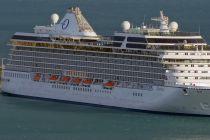
Oceania Cruises unveils 2026-2027 Tropics and Exotics itineraries
Oceania Cruises announced its 2026-2027 Tropics and Exotics Collection, presenting over 120 carefully charted itineraries designed for extensive...
April 4, 2025 - Cruise Industry
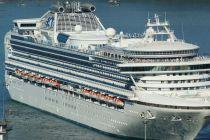
Princess Cruises announces 2026-2027 Southeast Asia itineraries
Princess Cruises has announced its 2026-2027 Southeast Asia cruise season, featuring an extensive range of itineraries designed to showcase the...
March 27, 2025 - Cruise Industry

Hong Kong's Kai Tak Cruise Terminal hosts 3 ships in one day
On March 19th, Hong Kong's Kai Tak Cruise Terminal achieved a significant milestone by accommodating 3 large cruise ships from 2 different lines at...
March 21, 2025 - Cruise Industry

Cunard's Queen Elizabeth undergoes extensive refurbishment in Singapore for 2025 season
Queen Elizabeth, the renowned Cunard liner, is currently in drydock in Singapore for a comprehensive refurbishment ahead of its 2025 sailings. The 2...
March 13, 2025 - Cruise Industry
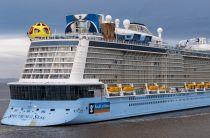
RCI-Royal Caribbean unveils 2026-2027 Asia cruise itineraries (ship Spectrum OTS)
RCI-Royal Caribbean International has announced its 2026-2027 deployment for Spectrum of the Seas, offering a variety of itineraries across Asia...
March 12, 2025 - Cruise Industry

Hong Kong welcomes 17 international cruise arrivals in March
Hong Kong is set to receive 17 international cruise ships this month, with 4 vessels already arriving on Sunday, bringing ~5,400 tourists, according...
March 10, 2025 - Accidents
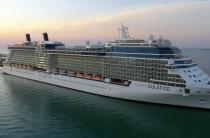
Celebrity Cruises adjusts 2026 schedule for Solstice ship
Celebrity Cruises has announced the cancellation of two voyages scheduled for Celebrity Solstice in January 2026 due to an extension of the vessel...
February 16, 2025 - Cruise Industry
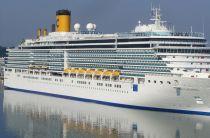
Costa Cruises opens bookings for 2027 World Cruise (Deliziosa ship)
Costa Cruises officially opened reservations for the 2027 edition of its World Cruise, a 139-day global itinerary scheduled for the Costa Deliziosa...
February 15, 2025 - Cruise Industry
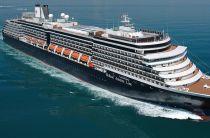
HAL-Holland America Line unveils 2026-2027 Asia Pacific cruise itineraries
HAL-Holland America Line has announced its 2026-2027 cruise offerings for Australia, New Zealand, and Asia, now available for booking. The...
January 10, 2025 - Accidents
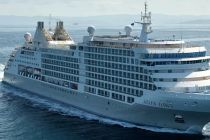
66-yo passenger passes away during Silver Dawn stop at Ocean Terminal (Hong Kong)
At 11:59 p.m. on Saturday, January 4th, a medical emergency involving a 66-year-old American male passenger on the luxury ship Silver Dawn was...
January 5, 2025 - show more news

 66°F
66°F 
 Mod. breeze
Mod. breeze